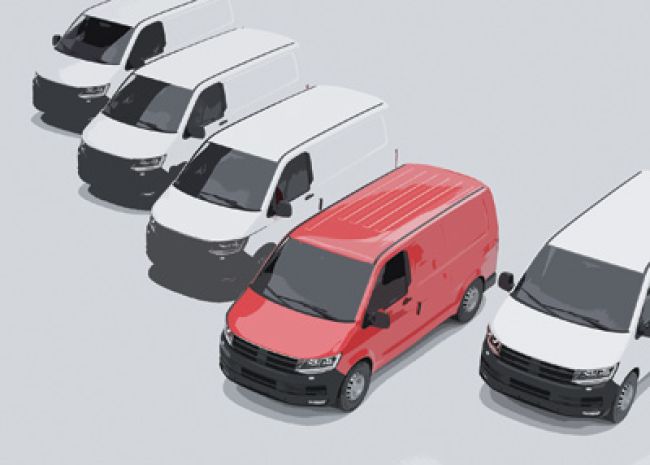
Will Your Fleet Need to Rightsize in a Post-Pandemic World?
When the pandemic hit the U.S. in early 2020, the impact on utility fleets was swift. Even though utility work continued as an essential service, fleets had to adapt. Social distancing meant crews could no longer pile into one vehicle safely. Many light-duty vehicles were parked as some employees switched to home bases.
Nebraska Public Power District (NPPD) was not immune to these changes. “As much as we could, we took the vehicles that were not being utilized as much because their owner or assignee had started to telecommute, and we assigned them to crews so they didn’t have to have multiples in the vehicle often,” said Matt Gilliland, director of operations support for the publicly owned utility that covers at least part of 86 Nebraska counties. This shift was in addition to regular vehicle cleanings, deep cleaning whenever a vehicle was serviced and sending cleaning equipment stockpiles throughout the state for use.
Now that the pandemic has begun to recede, Gilliland faces the task of getting vehicles back to their rightful owners – if they still need them. “We’re undoing that now,” he said. “It doesn’t go nearly as fast.”
Easing Back to Normal
NPPD did not rent or buy additional vehicles to allow for social distancing. The utility also did not forbid workers from sharing a vehicle but encouraged masking when sharing a ride. When extra vehicles were available, “We were adamant at communicating, ‘this won’t last forever,’” Gilliland said.
Now that some telecommuters are back in the office – and looking to get their assigned fleet vehicles back – Gilliland is largely responsible for making those connections. “We put the original owner with the person who was loaned the vehicle and let them have the conversation about the handoff back to the owner,” he said. “The original owner knows their schedule the best and their travel plans the best. Rather than saying, ‘You shall return your vehicle,’ we got out of the way and acted like a facilitator. That’s worked well.”
Some vehicles were returned right away, Gilliland said. For others, mutually agreed-upon dates were set for the future. “A few said, ‘I’m not sure I need a vehicle anymore.’ In those rare circumstances, we are engaged to determine whether it becomes a permanent assignment or gets moved somewhere else.”
Gilliland said the pandemic didn’t change any policies related to rightsizing and the fleet doesn’t have a lot of vehicles to reassign or shed at this point.
But that’s not necessarily the case for every fleet.
Paul Lauria, president of fleet management consulting firm Mercury Associates (https://mercury-assoc.com), said the pandemic may have only caused a blip for some, but “fleets are struggling with several rightsizing challenges that predated the pandemic and did not go away.”
In other industries outside of utilities, he believes many fleets will “never return to pre-pandemic levels since the world has learned to meet virtually.”
And as utilities move to using drones and robotics for line inspections, he anticipates that may reduce the number of bucket trucks required at some point in the future.
An Added Headache
The pandemic and its extended fallout have also caused significant disruptions in both the used and new car markets – a key consideration for selling off unnecessary assets. Initially, Lauria said, the used car market was depressed as rental car companies unloaded unused vehicles when the travel industry ground to a halt.
In Gilliland’s experience, however, prices increased for used trucks. “We could almost spend more money to acquire a used truck than bulk pricing on a new vehicle.”
The extended supply chain disruption and related chip shortage have made new trucks harder to come by.
Lauria said that he anticipates fleets will have more interest in modernization moving forward, noting that he currently sees excitement about electric vehicles and that fleets have gained historical insights from the Great Recession. “There was a significant amount spent on fleet modernization in the five years before the pandemic hit,” Lauria said. “A lot of utilities curtailed expenditures a year ago, but they may have generated an additional backlog.”
Looking again to the past recession, Lauria believes that “furiously playing catchup” without considering what was actually needed set off the spending spree. He’s hopeful fleets have learned from that. “In our minds, fleet modernization, whether a company requires a little bit of it or a lot, should go hand in hand with rightsizing.”
About the Author: Sandy Smith is a freelance writer and editor based in Nashville, Tennessee.
*****
Key Questions to Ask
Are you considering rightsizing your fleet for a post-pandemic world? Paul Lauria, president of fleet management consulting firm Mercury Associates, suggested starting the process by asking these three questions:
- How do we help our customers determine their asset needs?
- How well do we consider renting versus owning assets?
- How well do we monitor, measure and report on utilization of assets once in the fleet?
“When a client asks for a proposal on rightsizing the fleet and asks what kind of payback to expect, the short answer is that a 5% to 8% reduction is a good range,” said Lauria, who has more than 25 years of performing rightsizing assessments under his belt. “The real answer will depend on how proactively it has managed the acquisition and utilization of those assets. Organizations that don’t have robust processes will find a bigger bang for the buck in rightsizing and right-typing than an organization that is very structured in vetting requests every year and putting together a capital budget.”

